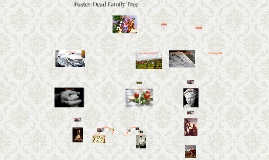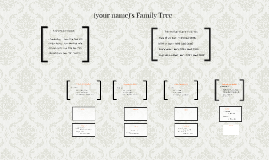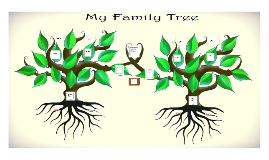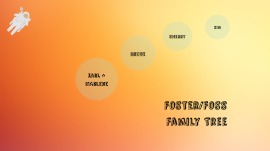Foster family
Transcript: By: Rebecca Bejjani Foster family/out-of-home care Foster simply means to promote the growth or development of; further; encourage: to foster new ideas. to bring up, raise, or rear. In this case as a foster child it is requirement and a responsibility for them to be cared for and feel cherished. Foster care is defined as a system, in which a minor has been placed into a ward, group home, or private home of a state-certified caregiver referred to as a "foster parent". The placement of the child is usually arranged through the government or a social-service agency. The institution, group home or foster parent is compensated for expenses. 1 (a) Define the family structure It takes communities to expand the theory based on the continuum of care to ensure that families have adequate resources to provide for their children. In addition, it takes committed families to extend themselves on behalf of children by becoming foster parents to make the system effective. In most instances removing a child from an abusive home (physical, mental, emotionally) is sometimes sadly necessary, but almost all parents will eventually have their children reintegrated into their homes, and if an abused child has to be placed in foster care outside the community, the reintegration process is often delayed. Most situations that allow children to be in this situation may be due to financial issues or neglect. Those who fostered to help children with special problems were more likely to have a child placed, had more children, and had fostered more types of special needs children. Parents who fostered because their children were grown were more likely to have a child placed, had more children, and were more likely to intend to continue fostering. Conversely, parents who wanted to be loved or who wanted companionship fostered fewer children. 1 (b) Provide reasons why this family structure exists in today's society 1 (c) Prevalence of this family structure 1 2 3 The most recent statistics from AIHW (2017a) show that, as of 30 June 2016, there were 46,500 Australian children living in out-of-home care. This has increased from 7.4/1,000 children at 30 June 2011 to 8.6/1,000 children at 30 June 2016. Table 1 shows the number of children in Australia admitted to out-of-home care, by age group, in each state and territory during 2015-16. There are considerable challenges with compiling accurate information about the numbers of children in out-of-home care, as evidenced by the notes accompanying the tables in this resource sheet (In reference to Table 1). The number of children in out-of-home care has risen every year over the past five years (AIHW, 2017a). As seen in Table 2, the number of children in out-of-home care increased by 6,827 (17%) from 30 June 2012 to 30 June 2016. This increase may reflect the cumulative impact of children being admitted to, and remaining in, out-of-home-care. The 2015-6 AIHW statistics show that 93.6% of all children living in out-of-home care in Australia are in home-based care. Of that figure, 48.6% are in relative/kinship care, 38.7% are in foster care, 4.8% are in third-party parental care and 1.4% are in other forms of home-based care. A further 6.4% of children were placed in alternative living arrangements such as residential care or group homes (see Table 3) (AIHW, 2017a). At 30 June 2016, the vast majority of children living in out-of-home-care had been in care for more than one year. Almost 14% of children had been in out-of-home-care for between 1-2 years, 26.1% had been in care for between 2-5 years, and 40.4% had been in out-of-home-care for more than five years. Table 3 compares the proportion of children in out-of-home care by living arrangements for each state and territory. Of children in out-of-home care, Queensland (48.5%), New South Wales (45.1%) and Northern Territory (47.1%) had a relatively high proportion in foster care, Victoria (56.4%) and NSW (50.9%) had a relatively high proportion placed with relatives or kin compared to other states and territories (AIHW, 2017a). The percentage of children placed with relatives/kin, other Indigenous caregivers or in an Indigenous residential care facility varied substantially across jurisdictions, from 38.2% in Tasmania to 81% of placements in New South Wales (see Figure 1). In Australia, in 2015-16, 66.2% of Indigenous children were placed with relatives/kin, other Indigenous caregivers or in an Indigenous residential care facility (AIHW, 2017a). 1 (d) analysis of trends from information collected The public in general knows very little about the foster care and what they may know is mostly rooted in stereotypes, stigma to choose the lens (positive or negative) through which we view everything. AdoptUS Kids media campaign is an American based multi-faceted, federally funded project whose mission is to raise public awareness about the need for families for children in foster care, and assist States, Territories and Tribes to recruit and retain foster

















